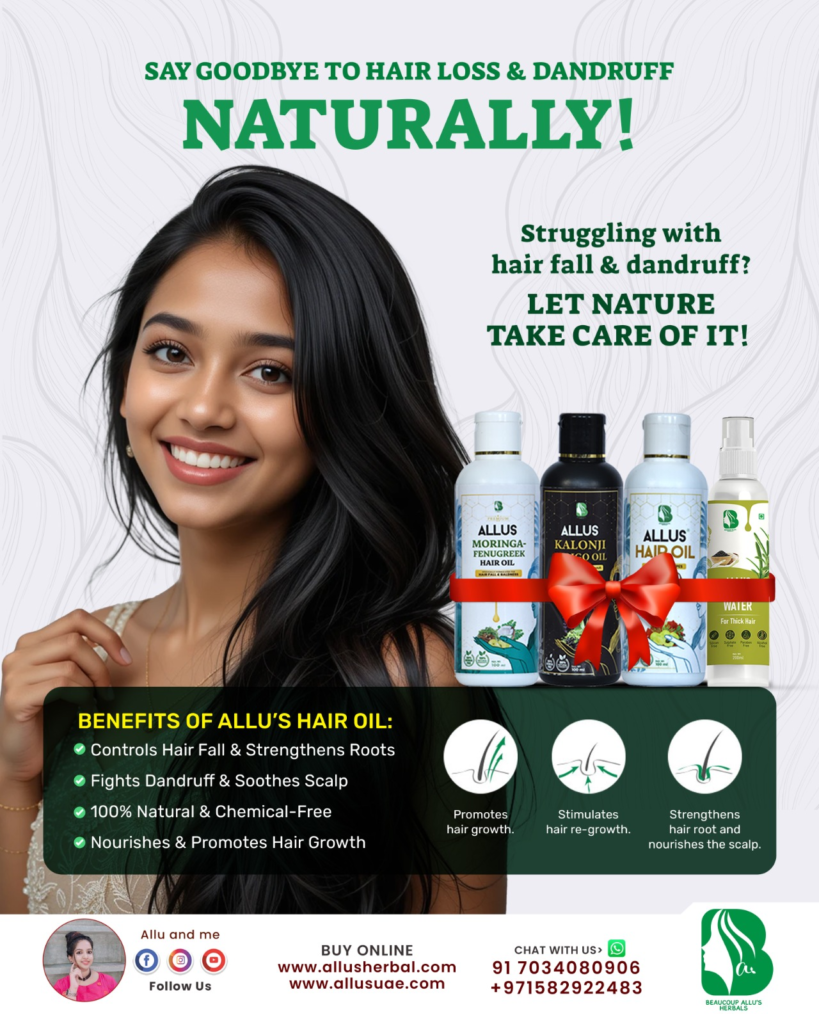The summer season in India creates a combination of high temperatures, humidity, and harsh sunlight that ruin your hair quality. Summer heat creates two significant challenges for your hair, heavy sweating and weather pollution. This causes heavy damage to your hair texture. So let’s look into proper summer hair care routines.
Challenges Faced During Indian Summers
Excessive Sweat & Oiliness
Extra sweating of the head produces greasy hair that fractures into dandruff.
Dryness & Frizz
The combination of hot dry winds along with exposure to sunlight absorbs natural moisture which results in dry and frizzy hair.
UV Damage
Too much sun exposure weakens hair strands and produces dull hair together with split ends.
Hair Fall & Breakage
The combination of high heat exposure and sweating damages hair roots to the extent that hair breaks easily.
Scalp Infections
Sweaty conditions along with skin oil and warm dampness encourage the development of fungal infections on the scalp.
Understanding Hair Types
Every individual has a unique hair type and identifying your personal hair type remains vital for creating proper hair care practices. People can classify their hair according to three different categories: texture type, porosity level and whether they have undergone chemical treatments.
1. Straight Hair
Characteristics: Straight Hair is naturally sleek along with smoothness and sheen because light reflects easily from the hair.
Common Issues: Greasy because sebum flows freely throughout the hair shaft.
Care Tips: To avoid oiliness on straight hair types you should use lightweight volumizing shampoo when caring for your hair while avoiding heavy oils in addition to keeping dry shampoo available for oil control.
2. Wavy Hair
Characteristics: A wavy-haired person has waves that fall in between straight and curly categories and produce gentle, soft movements of assorted volume strength.
Common Issues: Frizz and lack of definition, especially in humid weather.
Care Tips: For their hair care routine, people with wavy hair should choose sulfate-free shampoo products and apply lightweight curl-enhancing serum before letting their hair dry naturally.
3. Curly Hair
Characteristics: The curly hair patterns consist of distinct ringlet formations extending from loose to tight structures.
Common Issues: This hair type exposes itself to dryness because of its structure as well as frizziness and tangling.
Care Tips: Curly hair type requires a hydrating shampoo with conditioner, together with avoidance of excessive brushing and usage of leave-in conditioners or curl creams to achieve better definition.
4. Kinky/Coily Hair
Characteristics: People with this hair type display dense, tightly coiled or zig-zag curls that give their hair a full appearance.
Common Issues: Highly porous and prone to extreme dryness, shrinkage, and breakage.
Care Tips: Providing regular deep-conditioning treatments with protective hairstyle options and heat usage restrictions helps maintain hydration and defend against damage.
Chemically Treated Hair: Special Considerations
Reducing damage becomes key for hair that receives chemical treatments because these procedures destroy hair structures that lead to dryness and brittleness while increasing frizz. Maintain longevity together with health by picking sulfate-free shampoos designed for colored hair followed by regular deep-conditioning and application of leave-in treatments that add moisture.
The combination of hair oil with argan or coconut works better than heat styling, while additional sunblock safeguards hair health as these products help restore natural strength and shine. Damage repair work can be achieved through normal haircuts in addition to protein treatments, which lead to smooth and lively chemically processed hair.
Let us also check
Basic Summer Hair Care Steps
Take these easy summer hair care routine to minimize the damage caused during the Indian summer season (March – June) months.
Cleansing
- Rinse your hair twice or thrice per week with a gentle shampoo containing no sulfates to eliminate sweat along with dirt and extra oil.
- Use water that is neither hot nor cold during washing to protect the scalp from dryness and maintain its natural oil balance.
Conditioning
- A lightweight conditioner should follow shampoo use to provide hydration that fights away frizz.
- Apply conditioner to the mid-lengths and ends only because applying it to the scalp will cause greasiness.
Detangling
- Brush your wet hair using a large dent comb because this method helps protect your hair from fractures.
- A light spray or leave-in conditioning product will make it simpler to brush your hair successfully.
Masking
- Deep condition your hair once a week with a hydrating mask or homemade packs.
- The skin loses moisture throughout hot summer days and sunbathing thus requiring this remedy to restore it.
Serum Application
- Apply a light, non-greasy hair serum to protect hair from UV damage and reduce frizz.
- Choose serums with heat protection if you are using styling tools.
Night Care
- Put your hair in loose braids or bun patterns to stop excessive tangling and breakage.
- Using silk or satin pillowcases will decrease the friction that causes frizz.
- Urgent overnight moisturizing requires applying several drops of argan or almond oil to your hair before bed.
We have also talked about the winter hair fall reasons and tips for hair care. Read the blog on that Best Hair Care Routine to Follow during winter

Additional Summer Hair Care Tips
Preconditioning
- Before shampooing, apply a small amount of oil or conditioner which serves to reduce drying effects.
- Natural moisture remains inside the hair’s integrity while harsh cleansers experience protection from these substances.
Sun Protection
- People who go outside should cover their hair either with caps or scarves to protect it from sun exposure.
- Apply either UV-protectant hair spray or hair serum as protectants against damaging sun rays.
Chlorine Defense
- A bath with fresh water on your hair before swimming helps stop chloride from entering hair strands.
- A protective layer can be formed by applying leave-in conditioners or oil-based products.
- Wash your hair with fresh water directly after swimming.
Check out: How To Protect Hair From Chlorine Tap Water Naturally
Heat Styling Limitation
- Regular use of straighteners combined with curling irons and blow dryers must be limited.
- Use open-air drying or style your hair without heat appliances to reduce dryness.
Regular Trims
- The healthy growth of your hair requires regular professional hair trims every 6 to 8 weeks to help prevent split ends.
Hydrating Mists
- You should dilute aloe vera, rose water or coconut water in a homemade hair mist for refreshing and hydrating your hair.
- The mist keeps hair soft, cool and free from frizzy damage throughout daytime hours. The use of these products produces two benefits: they protect the hair from breaking while maintaining its fresh appearance.
Scalp Care
- Weekly washing of the scalp can be achieved through the use of neem and tea tree water solutions.
- Apply a mild scalp scrub once a month to eliminate product residue from your scalp.
- The application of cooling oils containing peppermint and aloe vera gel functions to ease inflammatory symptoms and ward off dandruff formation.
By following these essential hair care routines that we have discussed, you can actually prevent the most of the damage which will occur during the summer season. If you need natural solutions for your hair and skin related problems – Allu’s Herbal products are the right choice. Made from naturally sourced products and gone through clinically tests will help you in your transformative journey. Check out our natural hair care products and skin care products.


